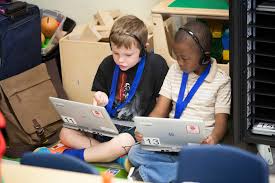Modern education continues to evolve as teachers explore innovative approaches to engaging young minds. Among these approaches, the strategic use of kids animated shows has emerged as a particularly effective tool for creating meaningful connections between entertainment and learning objectives. This collaboration between educational professionals and animated content creates powerful opportunities for cognitive and social development.
When teachers thoughtfully incorporate kids animated shows into lesson planning, they tap into children’s natural enthusiasm for visual storytelling while reinforcing curriculum goals. This integration requires more than simply playing videos in the classroom—it demands intentional selection, preparation, and follow-through to transform passive viewing into active learning experiences.
The cognitive benefits of well-chosen animated content extend across multiple developmental domains. Research indicates that educational animation can significantly enhance vocabulary acquisition by presenting new words in meaningful contexts with visual reinforcement. When children encounter unfamiliar terminology within engaging narratives, they develop stronger neural connections that support long-term retention and application.
Problem-solving skills flourish when students observe animated characters working through challenges systematically. Shows that demonstrate trial-and-error processes, collaboration, and persistence model valuable approaches to overcoming obstacles. Teachers can pause these moments for classroom discussion, asking students to predict outcomes or suggest alternative solutions before revealing the character’s approach.
Social-emotional learning receives particular support from animated programming designed with developmental psychology principles in mind. Characters who navigate realistic interpersonal conflicts, express emotions appropriately, and demonstrate empathy provide valuable models for young viewers. These storylines create natural opportunities for classroom discussions about feelings, relationships, and community values.
Cultural awareness and global perspective develop through exposure to diverse animated content. Programs featuring characters from various cultural backgrounds, speaking different languages, or celebrating diverse traditions expand children’s worldviews beyond their immediate communities. Teachers can build upon these representations through related activities that deepen understanding and respect for global diversity.
Creative expression often flourishes following engagement with quality animation. Students inspired by animated storytelling frequently demonstrate increased motivation for writing, drawing, and dramatic play. Teachers can channel this creative energy into projects that extend learning objectives while allowing for personal expression and artistic development.
Critical thinking skills develop when teachers guide students to analyze animated content rather than consume it passively. Simple questions about character motivations, story problems, and narrative resolutions encourage deeper engagement with media messages. This analytical approach lays foundations for media literacy skills that will serve students throughout their lives in our media-saturated society.
Implementation strategies determine the educational effectiveness of animated content. The most successful approaches include pre-viewing activities that establish purpose and activate prior knowledge, strategic pausing for prediction and discussion, and post-viewing extensions that apply concepts to new contexts. This structured approach maximizes cognitive engagement and learning outcomes.
Time management considerations remain important when incorporating animated content. Research suggests that brief, focused viewing segments followed by discussion and application activities yield greater educational benefits than extended viewing periods. This approach maintains attention while preventing the passive consumption habits associated with excessive screen time.
Assessment opportunities arise naturally when animation serves as a teaching tool. Students can demonstrate comprehension through discussion, writing, artistic responses, or performance. These varied assessment methods accommodate different learning styles while providing teachers with meaningful feedback about conceptual understanding.
Professional development resources now exist specifically to help educators maximize the educational potential of animated content. Organizations like Common Sense Media and PBS Learning Media offer frameworks for evaluating and implementing animation in educational settings. These resources help teachers develop expertise in media-based teaching strategies that support student learning.
In conclusion, the thoughtful integration of animated programming into educational environments offers significant benefits for student development across cognitive, social, and creative domains. When teachers select content carefully, implement it strategically, and connect it meaningfully to curriculum goals, animation becomes more than entertainment—it transforms into a powerful catalyst for learning, growth, and engagement in the modern classroom.

